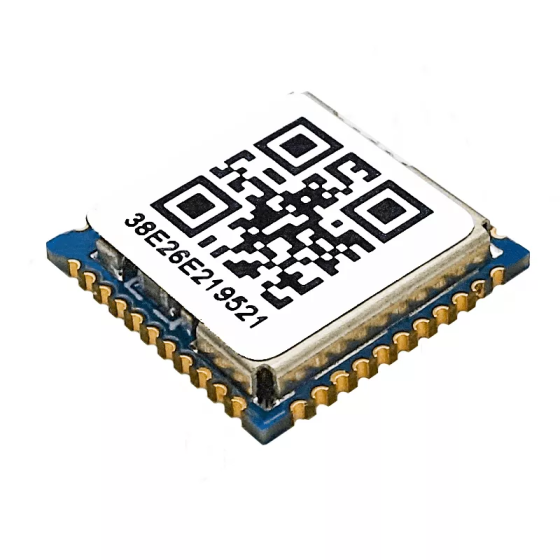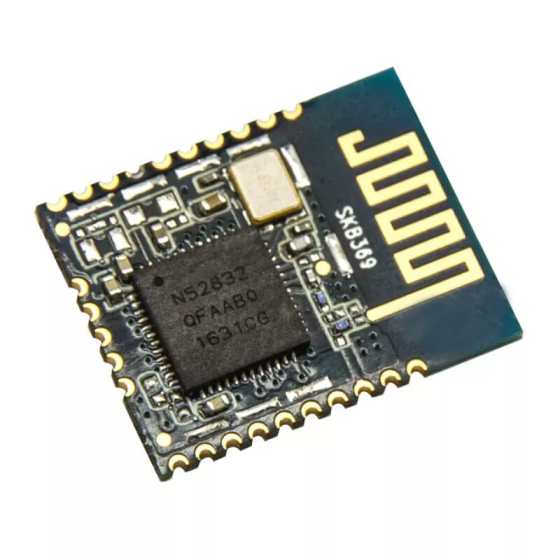Low power consumption bluetooth module technology has revolutionized wireless device-to-device communication due to its ubiquity and simplicity. It has low power consumption and low cost. It has played a pivotal role in the development of applications ranging from high-speed auto electronics to complex medical devices.

The problems faced by classic Bluetooth are fast battery consumption and frequent connection losses that require periodic re-pairing. The ability to successfully solve these problems has become one of the reasons for the rapid spread of BLE.
The phenomenal growth of the market for smartphones, tablets and mobile computing contributed to further progress.
The early and strong adoption of low power consumption bluetooth module by the heavyweights of the mobile industry has opened the door for wider adoption of BLE. This, in turn, has prompted semiconductor manufacturers to focus their limited resources on those technologies. They believe are most likely to develop in the long term.
As the mobile and tablet markets mature, the need to connect this equipment to the outside world has huge growth potential. This gives peripheral equipment vendors a unique opportunity to develop innovative devices that solve consumer problems they may not even know exist today.
In this way, low power consumption bluetooth module brings together many advantages that give small and nimble software companies access to a potentially huge market.
It comes with creative and innovative products designed to solve specific problems with a relatively modest project budget. Today, BLE also allows these developers to design competitive products that communicate with any modern mobile platform. It uses readily available chips, tools, and standards.
Low power consumption bluetooth module Features
Everything from the physical design to the models used is subject to the goal of maintaining the lowest possible power consumption. To reduce power consumption, the BLE device spends most of its time in sleep mode. When an event occurs, the device wakes up and sends a short message to the gateway, PC or smart phone.
The low power bluetooth module has maximum/peak power consumption is less than 15 mA and the average is about 1 µA. Compared to classic Bluetooth, active power consumption is ten times lower. In applications with infrequent switching cycles, one coin cell battery can provide reliable operation for 5-10 years.
For compatibility with classic Bluetooth technology and low implementation cost in small battery-powered devices, there are two types of chipsets:
Dual-mode, supporting both BLE and classic Bluetooth functionality;
Standalone BLEs optimized for small battery powered devices with a focus on low cost and low power consumption.
Low power consumption bluetooth module uses the same adaptive frequency hopping (AFH) technology as classic Bluetooth. This allows BLE to provide reliable transmission in noisy air conditions typical of home, industrial and medical applications.
To minimize costs and energy consumption when using AFH, the number of channels in BLE, It is reduced to 40 with a width of 2 MHz per channel, instead of 79 channels with a width of 1 MHz used in classic Bluetooth technology.
The 2.4 GHz unlicensed ISM band uses by Bluetooth technology, wireless LAN, IEEE 802.15.4/ZigBee, and several proprietary standards. With so many technologies in the same radio space, interference can degrade wireless network performance (i.e., increase delays and reduce throughput) due to the need for error correction and retransmissions.
In mission-critical applications, the effect of interference can be reduced by frequency planning and special antenna design. Because, both are classic Bluetooth and BLE use AFH to minimize interference from other radio standards. Bluetooth communications are stable and reliable.
The modulation technology uses in low power consumption bluetooth module is somewhat different from classic Bluetooth technology. This difference in modulation provides a communication range of up to 300 meters at a radio chipset transmitter power of 10 dBm (the maximum allowed for BLE).
Typically, a BLE piconet bases on the connection of a master device with several slaves. A device can be either master or slave, but not both. Further, the master decides how often the slaves can communicate. The slaves can only transmit data when requested by the master.
A new low power consumption bluetooth module feature added to classic Bluetooth is an alert function, with which a slave device can announce that it has some information to send to the master. An alert can also contain an event or measurement result.
BLE supports very short data packets (from 8 octet’s minimum to 27 octets maximum) that are transmitted at 1 Mbps.
Moreover, all connections use advanced energy-saving technology to keep cycle times as short as possible in order to minimize power consumption.
Low power consumption bluetooth module reduce interference from other radio standards operating in the 2.4 GHz ISM band, BLE uses AFH technology common to all Bluetooth versions.
The advantages of multi- path routing increase the link energy budget and effective operating range, and optimize power consumption.

Much of the intelligence of BLE is implemented by the controller. This allows the host to stay asleep longer and only wake up when the host needs to perform some action on a controller signal.
Accordingly, current consumption is reduced because the host processor typically consumes more power than the BLE controller.
As well as, low power consumption bluetooth module can support fast connection establishment and data transmission in as little as 3ms. This allows the application to establish a connection and send authenticated data in just a few milliseconds, and then quickly terminate the connection.
Communication range the increase in the modulation index allowed BLE to achieve a maximum communication range of more than 100 meters.
For maximum noise immunity, low power consumption bluetooth module monitors all packets using a robust 24-bit CRC algorithm.
The full AES-128 algorithm, using the CCM block protocol, provides strong encryption and authentication of data packets, guaranteeing the security of information exchange.
Lastly, low power consumption bluetooth module uses a 32-bit address per packet for each slave device, allowing billions of devices to be connected. The technology is optimized for point-to-point connections, while allowing multipoint connections using a star topology.
Copyrights© Shenzhen Skylab Co.,LTD All Rights Reserved.

